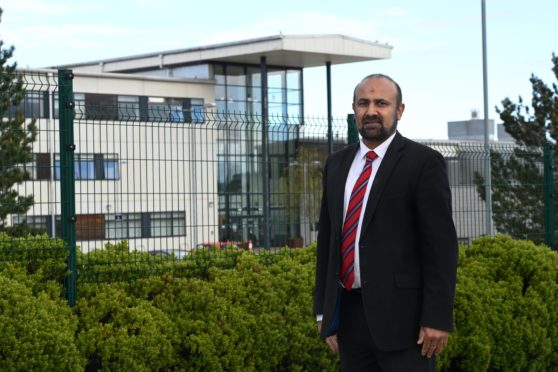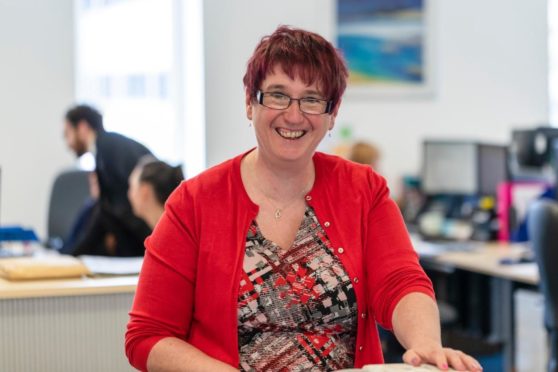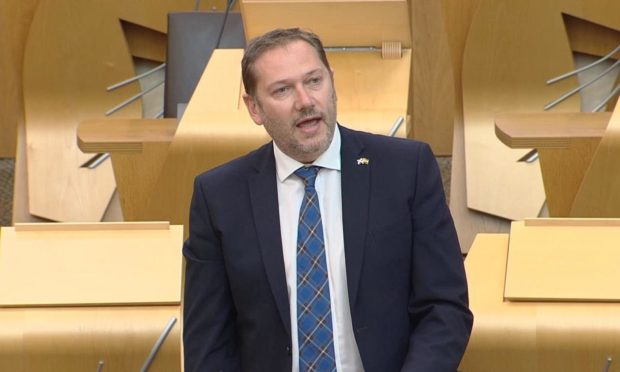Aberdeen is the worst council area in Scotland for school leavers going on to “positive destinations”, according to new figures.
And one expert said the statistics are just “the tip of the iceberg” for a city hit by the triple whammy of Covid, Brexit and changes to the oil and gas industry.
Data issued by the Scottish Government show that 89.5% of those who left schools in the Granite City went into jobs, further training or education in 2019/20 – the lowest rate in Scotland.
Aberdeen’s rate for the previous year was 93.2% and in 2017/18 it was 91.9%.
Despite the drop overall, there was an increase in school leavers going on to university with 46.9% going on to higher education.
In Aberdeenshire, the proportion heading into “positive destinations” was 93.6% last year, 91.3% in Highland and 90.9% in Moray. The Scottish average was 92.2%.
That is a drop for all three of those local authorities who had percentages of 95, 93.5 and 92.4 in 2018/19 respectively.
Jamie Hepburn, minister for higher education, further education, youth employment and training, said the positive destination figures show that the pandemic has hit young people hard.
Figures published last year highlighted concerns at leaver destinations in Moray and the authority’s education boss had already vowed to improve those numbers.
School leaver opportunities ‘directly affected’ by pandemic
These figures cover the start of the Covid-19 pandemic and show the impact it had on opportunities for school leavers which is noted in the report.
It said: “The availability of particular opportunities to 2019-20 school leavers may have been directly affected by the coronavirus Covid-19 pandemic.”
The report also said that where teenagers go after leaving school “may reflect both choices made by pupils, as well as the opportunities available to them.”
Aberdeen City Council’s education convener councillor M. Tauqeer Malik said the local authority are working alongside the national skills agency to improve positive destinations for young people.
He said: “As the Best Value Audit report stated the council introduced measures to support improvements in attainment and the percentage of young people entering a positive destination.
“In 2018-19, a review took place and following the review we are working with Skills Development Scotland to provide young people with a wide range of opportunities to ensure they have the skills to match the jobs available within the region.
“In light of Covid, we are carrying out a further review to ensure young people have the appropriate skills in areas such as digital and renewables.”
Positive destination figures are ‘tip of the iceberg’
Mary Holland, director of Developing the Young Workforce North East, believes the positive destination figures, which cover the first period of national lockdown, are just the “tip of the iceberg” when it comes to the futures of school leavers.
She said: “The Aberdeen city region has been hit by three significant changes in the last year with the impact of Brexit, Covid and the continued decline in oil and gas all increasing the challenges our young people face in securing a positive future.
“There is a real risk these figures are just the tip of the iceberg when it comes to future opportunities and jobs available to young people.”
Pandemic has been ‘terrible’ for young people
North East Scottish Conservative MSP Douglas Lumsden said the figures show the “terrible” aftermath of the pandemic on the lives of young people in Aberdeen.
He wants more to be done to offer apprenticeships to those who are leaving school.
Mr Lumsden said: “Covid has had a terrible impact on our young people, costing them time in school but also shrinking the number of job opportunities available when they leave.
“As the economy recovers, the north-east will continue to need young people to work in hospitality, fishing and farming, and many other sectors.
“It’s time for the SNP to show support for the North Sea energy industries so they can provide a future for our youngsters.
“And to help young people find these opportunities, there needs to be a major change to the way apprenticeships are offered, led by demand rather than unambitious Scottish Government targets.
“Better awareness of UK schemes like Kickstart and the apprenticeship levy would help North East businesses plan ahead for their future workforce.
“And there also needs to be more choice and availability of one and two-year foundation apprenticeships for S5 and S6 pupils to give them a hand up into the world of work.”
Coalition brands national figures ‘deeply disappointing’
This year’s statistics clearly highlight the impact of the pandemic on young people, with a sizeable decrease in those entering employment reflecting the limited opportunities in the labour market.”
Jamie Hepburn, minister for higher education.
Out of the 47,351 young people who left school across Scotland in 2019/20, 92.2% went on to work, university, college or training. That is compared to 92.9% before the coronavirus crisis.
The figures also revealed that 42.9% of the country’s school leavers went on to university compared to 38.4% in the previous year – which the Minister described as “a record-high proportion”.
The percentage of young people across the country with additional support needs (ASN) moving on to positive destinations last year was 87.2% compared to 87.9% in 2018/19.
The Scottish Children’s Services Coalition, which is made up of different organisations, said that figure was “deeply disappointing.”
A spokesman for the alliance said: “It is deeply disappointing to see a fall in the number of school leavers with ASN in a positive destination and to note that this gap is growing when compared with those with no ASN.
“As the impact of Covid-19 becomes more evident we anticipate this gap growing and it is crucial that resourcing is targeted at those individuals with ASN to give them the best possible opportunities, both in the classroom and as they transition beyond it.
“This is clearly challenging in an environment of austerity, however, the cost to society in the long term if adequate resourcing is not provided will far outweigh any potential savings made today.”
Minister offers help to school leavers
Jamie Hepburn, minister for higher education, further education, youth employment and training, said the positive destination figures show that the pandemic has hit young people hard.
He said: “I am pleased that the proportion of young people in a follow-up positive destination is still at a high level, and a record-high proportion are in higher education nine months after the end of the school year.
“However, this year’s statistics clearly highlight the impact of the pandemic on young people, with a sizeable decrease in those entering employment reflecting the limited opportunities in the labour market.
“We are providing direct support to those affected through the Young Person’s Guarantee which gives every 16-24 year old a job, placement, training or volunteering opportunity.”




